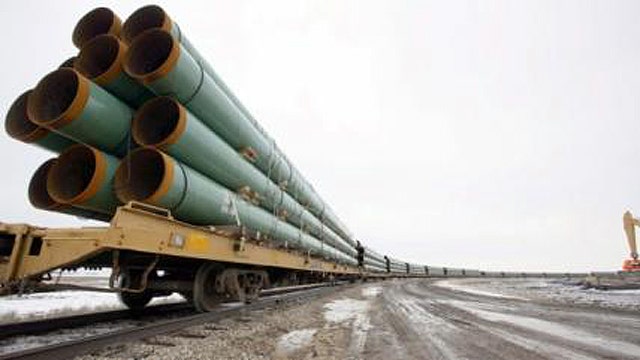While it may not qualify as a silver lining, there was one bright spot to emerge from Washington D.C.’s latest adventure in bad budgeting: A provision further enhancing our country's expanding energy independence.
Championed by U.S. Rep. Jeff Duncan (R-SC) the provision gives formal Congressional approval to oil and gas drilling across 1.5 million acres of the western Gulf of Mexico.
According to the Bureau of Ocean Energy Management, this region is home to an estimated 172 million barrels of oil and 304 billion cubic feet of natural gas – resources that will further reduce our nation’s declining dependence on foreign oil.
[pullquote]
Across America (and on its coastal borders), a domestic energy revolution is underway -- one that is providing our nation with a genuine economic “stimulus” built on the free market pillars of innovation and hard work.
Even more encouraging, this victory is being achieved despite efforts by eco-radicals in Washington, D.C. to shut down energy production on federal lands.
In Pennsylvania the Marcellus Shale formation has produced 1.4 trillion cubic feet of natural gas during the first two quarters of 2013 alone -- enabling the Keystone State to become the third-biggest gas-producing state in America. West Virginia -- another state accessing the Marcellus Shale -- has rocketed into the top ten in gas production (even though the Mountaineers have drilled only five percent of all available Marcellus wells).
These gains – powered by innovative hydraulic fracturing (or “fracking”) techniques – are driving down energy prices nationwide and creating desperately needed jobs at a time when America’s work force participation has shrunk to a 35-year low.
According to a report released this month by the U.S. Energy Department, domestic oil production is climbing to levels not seen since 1970. And it's projected to increase by an average of 800,000 barrels per day through 2016.
Natural gas production is also expected to expand dramatically – climbing by 56 percent between 2012 and 2040 to an estimated 37.6 trillion cubic feet.
All told, America will rely on imports for just 25 percent of its oil supplies in 2016 – down from last year’s 37 percent level. Meanwhile the world oil benchmark is projected to drop to $92 per barrel in 2017 – $20 less than last year’s average.
Making these gains even more impressive? The fact that natural gas production on federal lands has fallen by 33 percent since 2007, according to a Congressional Research Service report. On state and private lands, however, it has increased by 40 percent. Meanwhile crude oil production on federal lands has shrunk slightly since 2007 – but has increased by 35 percent on non-federal lands.
Imagine how much lower prices could be driven -- and how many more jobs could be created -- if the federal government were to decrease its land ownership or grant more control over energy exploration in these areas to states?
In another rebuke to the Obama eco-radicals, the latest Energy Department data shows a continued decline in CO2 emissions -- the result of a natural gas expansion that's projected to pick up momentum over the next three decades. In fact by 2030, natural gas will replace coal as the largest source of domestic electrical power -- further reducing CO2 levels (as well as the cost of energy production).
And for anyone still misguidedly clinging to the federal government’s “green jobs” scam, this cleaner, less expensive energy future we are experiencing has virtually nothing to do with expanded reliance on renewables -- which are projected to increase from only 11 to 12 percent of domestic production over the coming thirty years.
Just as government policies failed to “stimulate” the economy, they also failed to lower CO2 levels: The free market did that -- and the results are truly something to behold.
“U.S. manufacturers are benefitting form the availability of a secure supply of low-cost natural gas, especially for manufacturers in energy-intensive industries,” a September 2013 report from IHS notes.
The report predicted these energy efficiencies would boost industrial production by 2.8 percent by 2015 – and by 3.9 percent by 2025.
Cheaper, cleaner and more abundant energy -- long a favorite talking point of the Washington enviro-liberals -- is becoming a reality in America. But we could further expand our advantage if lawmakers resist efforts by eco-radicals to stamp out production on federal lands.

